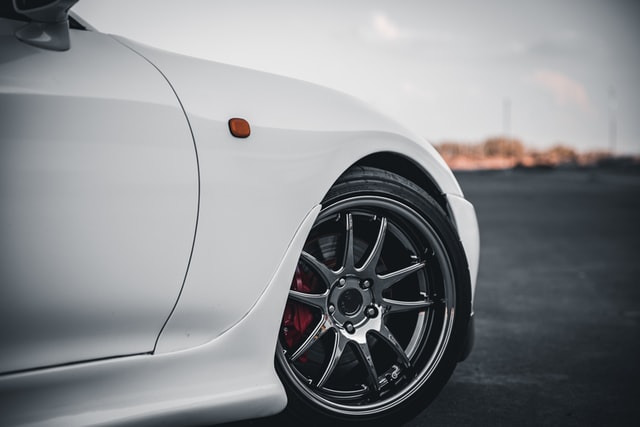Michelin was the first to release low-profile tires in 1937, intended exclusively for racing cars. Only about half a century later, such tires became available to owners of regular vehicles. Today, anyone can choose, buy, and install a low profile, but is it worth it? The Indy Auto Man car service experts from Indianapolis recommend studying the advantages and disadvantages of low-profile tires first.
What is a low-profile tire?
Tires have several geometric characteristics, and the profile height is one of them. On modern tires, this indicator is written through a slash from the width of the wheel. For example, in the designation 195/55 R16, 55 is the profile height. You can read more about tire markings here.
The profile height is the ratio of the tire height to its width. That is, the wider the tread and the smaller the distance from the outer edge of the tire to the disk, the lower the profile. If the tire percentage ratio is less than 60, it is conditionally considered low-profile. However, many modern serial cars have tires with a 45- and even 35-percent profile.
Advantages
Although the tire sidewalls have relief patterns, they still look inexpressive – just black rubber. If you reduce the tire height but increase the diameter of the disk, the overall size of the wheel will remain the same, but it will look much more attractive. Appearance is a frequent reason to install a low profile. At the same time, car owners often neglect the manufacturer’s recommendations for permissible tire and disk dimensions.
Of course, this is not the only advantage. Here are some other characteristics that improve when installing low-profile tires:
- Controllability and stability. Since the tire is wider and the height is less, it does not deform as much under loads, including lateral ones. This means the car is better controlled and behaves more stably on the road. As a rule, the braking distance also becomes shorter due to the stability of the contact patch with the road.
- Fuel efficiency. Less deformation during movement weakens the rolling resistance and, therefore, increases the fuel economy. In addition, a high-profile tire heats up more at the same speed.
FOR INFORMATIVE CONTENT VISIT.. : Corporate Gifts
Disadvantages
Of course, if such tires had only advantages, they would be installed on all models. The cons of such tires can outweigh the pros for most passenger vehicles. Here is what suffers first:
- Depreciation quality. Damping of road bumps occurs not only due to suspension springs — the tires are the first to receive the impact. And the greater their height, the better they soften this impact. So, driving with low-profile tires on bad roads is not the best idea.
- Tyre life. For the same reason, tires can fail much earlier — strong impacts can damage the sidewall.
- Acceleration dynamics. It would seem that less rubber means less weight. However, you increase the wheel rim size to have the same diameter wheel. And it is already metal, albeit made of light alloys. As a result, a wheel with a low-profile tire turns out to be heavier – and as a consequence, its inertia is higher. Therefore, more power is needed to spin it, so the car dynamics from installing low-profile tires.
- Ground clearance. If you put low-profile tires on regular disks, the weight will be less, and the acceleration dynamics will improve. But the clearance will also decrease slightly, creating another disadvantage on bad roads.
- Resistance to aquaplaning. As a rule, manufacturer-approved low-profile tires are not only lower in height but also wider than standard ones. Alas, such a tire floats up easier when hitting a deep puddle. True, most low-profile tires have a directional tread pattern with wide water-draining grooves, so this is a very relative disadvantage.
- Compatibility issues. Noticeably wider tires may not fit the arches and will touch the fender liner when turning.
How to decide whether to install low-profile tires
You can draw your conclusions by evaluating the advantages and disadvantages of such tires. If you have a powerful car, you drive mainly on good roads (for example, you live in a large city like Indianapolis), and you like dynamic driving, which implies intensive braking, the low-profile tire advantages may come in handy.
For bad roads, tires with a standard profile are better suited. The shock absorption quality will be higher, which increases the chances that you will avoid a hernia when hitting an uneven surface. And you still won’t be able to evaluate good handling on bumps. It’s not for nothing that SUV tires are mostly high-profile.
Keep an eye for more news & updates on Vents Buzz!
